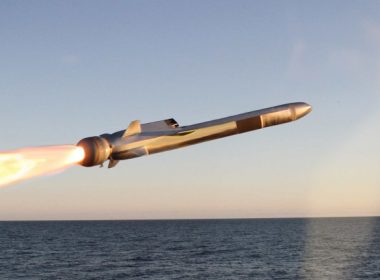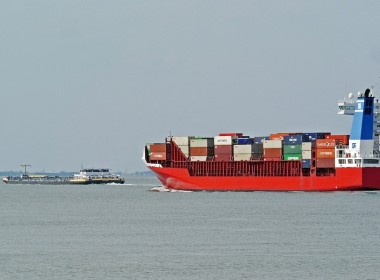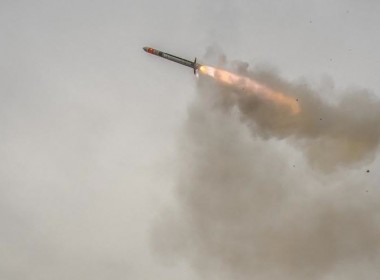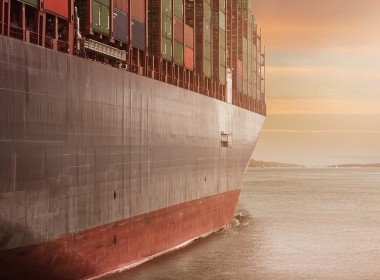OPINION | Punishing the dragon—it’s not about Tomahawk missiles from SSNs

What, exactly, is Australia’s intended fleet of nuclear-powered submarines supposed to do?
It’s reasonable to ask the question, because the government has not spelled out the roles of the vessels.
Nonetheless, the answer is clear. Operating as part of a coalition in a major-power war to defend Taiwan against China, for example, their main function would be to undertake anti-submarine warfare (ASW) and anti-surface warfare (ASuW)—that is, to sink or repel enemy ships and submarines and help other forces do so as part of deterrence by denial.
The submarines will also have a capability for land attack that could be seen as part of deterrence by punishment, but that will be secondary, not least because the small number of submarines on hand means any barrage of missiles won’t likely deliver unacceptable cost to China.
The nuclear submarines (SSNs), which are due to begin entering the fleet in 2032, would act as apex predators of the seas to impose deterrence by denial. This is the basis for Australia’s military strategy set out in the 2023 Defence Strategic Review, and the SSNs are ideally suited for the role.
The review defines deterrence by denial as “an approach designed to stop an adversary from succeeding in its goal to coerce states through force, or the threatened use of force, to achieve dominance.” That contrasts with deterrence by punishment, in which an enemy is intended to be warded off by fear of retaliation.
“Their high transit speed, long endurance on station, and operational flexibility within these regions makes them ideal for long-range operations at sea.”
Narrowing the concept of deterrence by denial down to the Australian context, it means the SSNs must contribute to an anti-access and area denial capability. That’s one that is “designed to detect an adversary and prevent an advancing adversary from entering an operational area, and to limit an adversary’s freedom of action within a defined operational area.”
This would be the main application of the unique strengths of an SSN—superior stealth, speed and endurance—combined with weapons and advanced sensors for dealing with other submarines and ships.
Where they will operate is suggested (though not constrained) by the review’s declared area of primary strategic interest, which extends out from our immediate air and maritime approaches across a vast expanse of the Indo-Pacific: from the northeastern Indian Ocean through maritime Southeast Asia into the Pacific, including our northern approaches. Their high transit speed, long endurance on station, and operational flexibility within these regions makes them ideal for long-range operations at sea, far more so than much slower diesel-electric submarines, which cannot stay on a station for long and do not have the speed for rapidly entering or escaping in the event of detection.
Michael Clarke questions the utility of the future nuclear submarines in an 18 March 2024 article in the Lowy Institute’s Interpreter, saying “how the SSNs contribute to a strategy of denial remains under-specified.”
He argues that in the context of a crisis in the Taiwan Strait, the submarines would be better suited to imposing costs on China as a form of deterrence by punishment. That would see them launching strike missiles against targets on the Chinese mainland. But he then argues that China is likely to be able to effectively defend against such attacks.
Clarke is correct to question the utility of nuclear submarines in carrying out strikes on the Chinese mainland, but not necessarily because China can potentially defeat such strikes. Rather, the limitation is that they just won’t be able to impose much punishment.
“A better role would be to use them against ships and submarines.”
Under the AUKUS Pillar 1 “Optimal Pathway”, Australia will first acquire three Virginia-class SSNs. They will be two Block IV boats arriving in 2032 and 2035 and a Block VII Virginia in 2038.
Australia also has an option to acquire two additional Virginia-class SSNs before transitioning to the Anglo-Australian SSN-AUKUS class in the 2040s.
Each of the two Block IVs will have vertical tubes for 12 Tomahawk land-attack missiles. (Two possible tube configurations would have the same Tomahawk capacity.) The Block VII boat probably will also be able to carry 12 Tomahawks.
Block Vs can carry 36 Tomahawks, but unfortunately, there seem to be no plans for Australia to get Virginias of that version, not even as the two optional submarines. So, regardless of which configuration, each Australian Virginia will carry 12 Tomahawks, and the submarine fleet capacity will be 36 of those missiles for three submarines and 60 if the optional two, probably Block VIIs, are also acquired.
A rule of thumb for submarine deployment tells us that, in peacetime, only a third of boats in a fleet are available for operational deployment. Even if we optimistically assume that more SSNs can be made available in a crisis—say, three from a maximum Virginia-class fleet of five—then only 36 Tomahawks would be available. That would hardly be a sufficient force for imposing deterrence by punishment on China.
Rather than wasting the great strengths of SSNs on such a mission, a better role would be to use them against ships and submarines. That fits much more closely to the concept of deterrence by denial.
Operating as part of a multi-national coalition, and in a manner that fully exploits an undersea warfare network, SSNs can quickly impose unacceptable losses on any Chinese naval forces supporting a cross straits invasion or operating in the South China Sea.
China’s navy is a key element of its power and credibility. An ability to impose such cost on it would reinforce deterrence by denial, making Beijing consider a cost-benefit calculus on the use of force to achieve strategic ambitions.








